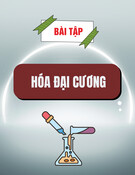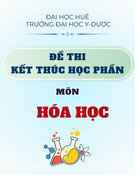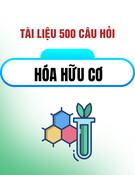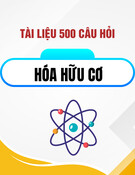
137
HNUE JOURNAL OF SCIENCE
Educational Sciences 2024, Volume 69, Issue 5B, pp. 137-148
This paper is available online at http://hnuejs.edu.vn/es
DOI: 10.18173/2354-1075.2024-0142
APPLICATION OF PYTHON FOR DESIGNING VISUAL AIDS
AND INTEGRATION OF ARTIFICIAL INTELLIGENCE (AI)
TO TEACHING MATHEMATICS AT HIGH SCHOOLS
Thi Thai Nhat Duy* and Bui Anh Tuan
School of Education, Can Tho University, Can Tho city, Vietnam
*Corresponding author: Thi Thai Nhat Duy, e-mail: thithainhatduy@gmail.com
Received May 10, 2024. Revised November 17, 2024. Accepted December 27, 2024.
Abstract. This research investigates the effective integration of Python programming and
visual aids in teaching mathematics at high schools in the Mekong Delta region. Recognizing
the transformational power of technology in education, the study utilizes Python's capabilities
to design interactive and engaging visual tools for mathematics instruction. The theoretical
framework draws on insights from scholars such as Hyerle, Bui Anh Tuan, and Giardino,
emphasizing the cognitive benefits of non-linguistic sign systems in mathematics learning.
The experiment follows a structured process involving content research, lesson plan
development, and real-world application in high school classrooms. The impact is assessed
through a comprehensive survey, employing Cronbach's Alpha for reliability analysis.
Results indicate a positive reception among students, who showed a preference for the visual
and Python-integrated teaching approach.
Keywords: visual aids, mathematics education, Python application, high school.
1. Introduction
According to Hafni et al. (2020) [1], the Fourth Industrial Revolution has driven the rapid
development of science and technology, significantly impacting various sectors, including
education. The General Education Program (2018) [2] has been widely implemented across all 63
provinces and cities in Vietnam, ensuring uniform application across localities, regions, and areas,
with no educational institutions excluded. The comprehensive development outlined in the overall
program for high school students is closely linked to the use of visual aids in teaching, particularly
in Mathematics.
Moreover, the Ministry of Education and Training (2018) [2], in the 2018 General Education
Program, emphasized the use of visual aids in teaching and highlighted their critical role in
mathematics education. Visual aids are invaluable in mathematics instruction, not only because
they provide students with accurate, long-term information, but also because they help validate
theoretical knowledge, correct misconceptions, and foster the creation of new knowledge.
Previously, the use of visual aids in mathematics teaching was relatively basic, involving crude
assembly models, unimaginative pre-made videos, self-designed sideboards, or simple
illustrations drawn with chalk on blackboards.

Thi TND & Bui AT
138
According to Pepin et al. (2017) [3], teachers now have opportunities to independently create
and publish educational resources on websites, either as individuals or as part of a community.
Pepin et al. (2013) [4] further note that teachers, as users, have new tools to search for documents,
adapt them for classroom use, modify content, and share resources. Similarly, Sadiman et al.
(2010) [5] define media as tools capable of conveying messages and information from senders to
recipients, stimulating thinking, emotions, attention, and interest, particularly in education, where
they help learners achieve their goals.
Artificial intelligence (AI) is a field of research dedicated to innovations and developments
that have enabled machines, computers, and artifacts to exhibit human-like intelligence, including
cognition, learning, adaptation, and decision-making capabilities (Chen et al., 2020) [6]. The
remarkable advancements in AI and its application in education have significantly improved
teaching processes for educators while enhancing learning quality for students (Huang et al.,
2021) [7]. AI has introduced new opportunities, potential, and challenges to educational activities
(Ouyang & Jiao, 2021) [8].
Harry and Sayudin (2023) [9] assert that AI has the potential to transform education by
making learning more personalized, engaging, and efficient. One of AI's most notable benefits in
education is its ability to tailor learning experiences to individual students. Personalized learning
allows students to progress at their own pace and in ways that align with their unique learning
styles, often leading to improved educational outcomes. AI-driven tools, such as intelligent
tutoring systems, chatbots, and automated grading systems, enhance efficiency by saving teachers
time and providing consistent, accurate feedback. However, the integration of AI into education
also poses challenges. Concerns related to privacy, security, and the trustworthiness of AI
systems, as well as their costs and potential biases, must be carefully addressed. Ethical
considerations, including ensuring accessibility, transparency, and fairness in AI-based education
systems, are also crucial. Despite these challenges, AI holds immense promise for education. Its
capacity for advanced data analysis enables educators to make more informed, data-driven
decisions, further optimizing the learning process.
Visual aids are highly effective resources that significantly enhance the teaching of
mathematical concepts, much like their application in foreign language instruction. The benefits
of incorporating visuals into mathematics education extend beyond capturing and maintaining
students’ attention. Visual tools play a pivotal role in motivating learners to actively engage with
the subject matter while aiding in the retention of complex information (Pateşan et al., 2018) [10].
This paper proposes integrating the Python programming language with artificial intelligence
to design visual aids for teaching mathematics at the high school level in Vietnam. The insights
presented in this paper aim to guide future trends in the application of AI in high school education.
2. Content
2.1. Literature review
2.1.1. Visual aids in teaching mathematics
According to Hyerle (2008) [11], visual aids are non-linguistic symbol systems utilized by
learners, educators, and leaders to connect mental images with physical images and emotions,
thereby creating and conveying rich patterns of thinking. These visual forms also serve as
metacognitive tools for self-assessment within specific topics as well as for interdisciplinary
learning. Non-linguistic representation is an essential tool for enhancing students' learning.
Bui Anh Tuan et al. (2022) [12] define visual aids as objects, phenomena, symbols, models,
and other resources directly used by teachers and students during instruction to facilitate the
comprehension of new knowledge and the development of intellectual abilities. The application

Application of Python for designing visual aids and integration of Artificial intelligence (AI) to teaching…
139
of visual aids in teaching is a method to improve teaching effectiveness and provide students with
supplementary tools for processing subject information.
According to Giardino (2010) [13], visualization is a method of presenting information in a
way that enables learners to generate symbols. This process helps them understand the common
and general elements of the given material through visual representation, instinctively identify
difficulties, and draw new conclusions. Visual tools stimulate thinking and perception
(Kishore, 2003) [14].
2.1.2. Python software
According to Tollervey (2015) [15], Python is a primary programming language in computer
science, and teaching programming using Python helps learners develop thinking, foster
creativity, and achieve high efficiency in learning. Python is a high-level programming language
that supports multiple programming paradigms, including imperative, functional, and object-
oriented, with a clear, understandable, and simple syntax (Marowka, 2018) [16].
Myers et al. (2007) [17] state that a course on computational methods using Python, along
with related numerical and visual libraries, enables learners to deploy simulations for various
modules, showcasing the breadth and flexibility of the computational environment.
Guo (2013) [18] highlights the Online Python Tutor, a web-based program visualization tool
for Python that has become a popular resource for teaching basic computer science courses. With
this tool, both instructors and learners can write Python programs directly in the web browser
(without requiring any plugins), step forward and backward through the execution process to
observe the runtime state of data structures and share their program visualizations online. The
Online Python Tutor has been widely used in CS1 courses by instructors at numerous universities,
including UC Berkeley, MIT, the University of Washington, and the University of Waterloo.
Visualizations from the tool have also been embedded in three web-based Python digital textbook
projects, attracting approximately 16,000 viewers per month and being used in at least 25
universities. This open-source software is freely available for download at pythontutor.com.
2.1.3. ChatGPT
ChatGPT is an AI chatbot developed by OpenAI, designed for direct interaction with users.
It was created by a team of researchers and technologists committed to developing AI safely and
responsibly (Dempere et al., 2023) [19]. ChatGPT has demonstrated exceptional performance
across various applications, including generating coherent and logical content, producing complete
essays, providing rapid and accurate chatbot responses, performing proficient language translation,
answering questions, and writing programming code, among others (Qadir, 2023) [20].
2.2. Research methodology
2.2.1. Experimental procedure
Diagram 1. The process of constructing and using visual aids
according to Bui Anh Tuan et al. (2022)
Analyse
content
Programming
and Digitization
Design
Use in
teaching
Store the
products
Collect
feedback

Thi TND & Bui AT
140
Step 1: Analyze the lesson content to select a suitable visual aid (VA).
Step 2: Develop a lesson plan using VA.
Step 3: Implement the lesson plan based on teaching practice.
Step 4: Collect feedback to improve the lesson plan.
If the feedback is positive, proceed to Step 5.
Step 5: Store the lesson plan for future teaching.
If the feedback is not positive, refine and return to Step 2.
2.2.2. Some visual aids were created using Python and integrated with artificial intelligence tools
The outputs are generated in .jpg and .mp4 formats from the .py file, enabling the creation
of visually engaging educational videos. Since these outputs originate from the .py file format,
artificial intelligence can be applied to the visual aids through ChatGPT, utilizing data from the
GPT model alongside the designed .py file data. This integration allows for the rapid production
of visual aids, saving time while ensuring comprehensive and accurate content. However,
limitations exist in the current implementation, as it is not yet fully optimized. Detailed and clear
descriptions of the visual aids are essential to achieve the desired results. Figures 1, 2, 3, and 4
were designed using Python, while Figures 5 and 6 were created through a combination of
ChatGPT and Python for output.
Figure 1. Illustration of the graph of the
function
log ( 1)
a
y x a=
using Python
Figure 2. Description of the oblique
asymptote of the function using Python
Figure 3. Description of the difference
of two vectors using Python
Figure 4. Description of the unit circle
using Python

Application of Python for designing visual aids and integration of Artificial intelligence (AI) to teaching…
141
Figure 5. Description of the solution region
of the inequality
12xy+
using ChatGPT with Python
Figure 6. Description of a line parallel
to a plane using ChatGPT
with Python
2.3. Research results
2.3.1. Experiments
The experimental content involves assessing the suitability of two lesson plans and three
teaching plans within the Mathematics project under the teaching conditions at high schools in
the Mekong Delta. Specifically:
- Lesson Plan 1: Lesson content on “Trigonometric angle values from 0 to 180 degrees”.
- Lesson Plan 2: Lesson content on “Permutation - Combination - Arrangement”.
- Teaching Plan for Project 1: Introduction to mathematical animation tools. Open-source
Manim programming in Python and Chat GPT support during programming.
- Teaching Plan for Project 2: Designing applied mathematical art and supporting
design software.
- Teaching Plan for Project 3: Experience using GeoGebra software through graphing
functions.
2.3.2. Experimental survey questionnaire
Table 1 contains the questions to survey students' opinions on learning mathematics through
digital visual aids. For questions Q1, Q2, Q3, and Q4, a 5-point Likert scale is used for quantitative
evaluation: Completely Disagree = 1, Disagree = 2, Neutral = 3, Agree = 4, Completely Agree = 5.
Question Q5 uses a scale from 1 to 10 to quantitatively evaluate the responses.


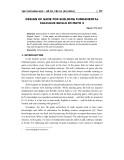

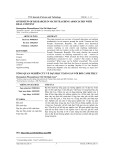

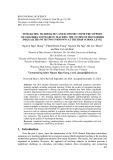

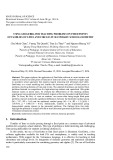
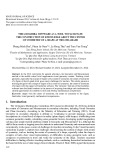
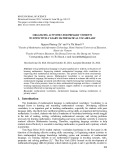
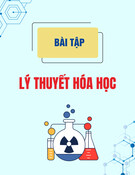
![Đề thi kết thúc học phần Nguyên lí Hóa học 2 [mới nhất]](https://cdn.tailieu.vn/images/document/thumbnail/2025/20251014/anhinhduyet000/135x160/69761760428591.jpg)
